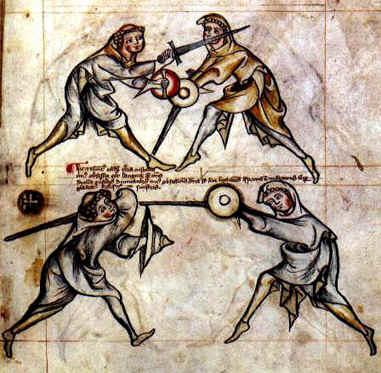What do you think medieval shields were made of? Plywood isn't a modern invention. 7.5 lbs isn't that bad, either. My heater is 13lbs, and it doesn't take long to build up the stamina and, more importantly, technique for extended use. The trick is to always keep your shield against your body, unless you're actively using it- well, at least for heaters, it is.
I'd recommend 2 things:
1. Edging. Most blocked shots will hit the edge of the shield, which is the weaekst part. A steel rim around the edge is a Very Good ThingTM. You seem to be handy with metal, so you could make your own, or you could go the "cheater" route and buy some aluminum shelf-edge from the hardware store.
2. 22" is an awkward size for a centre-boss round shield. Centre boss shields don't have quite the speed or accuracy of strapped shields, so the two ways to compensate are to either make the shield much smaller, so that it can move quickly:
or big enough that you don't
have to move it, as with the Roman scutae and norse round shields.
Norse round shields seem to be around the 30-35" range. They were also apparently from 2" up to 4" thick! In the SCA, the usual guideline for a centre-boss round shield it to put your fists together so that your forearms are in a straight line and measure from one elbow tip to the other. I'm 6'3", and that's only 32" on me, so it's likely the norse went slightly larger than that.
One trick for carrying a centre-boss round shield for extended periods is to stand with your left foot forward, with knee bent, and rest the shield on your knee, allowing the top to hang away from your body so that your arm is straight and the shield meets your leg at a 90° angle.
For readding, I found this site:
http://members.ozemail.com.au/~chrisandpeter/shield/shield.html
















